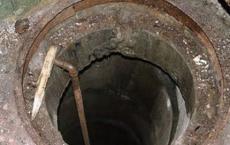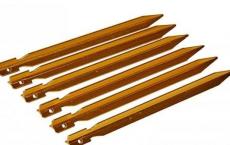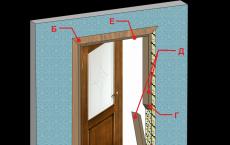Geotextile laying technology
H woven geotextile made of 100% polypropylene using spunbond technology, thread fastening in the fabric - thermal bonding, needle punching.
Grades (density) of geotextiles from 100 to 600 g/m2
Standard roll width 1.5m; 2.0m, 2.15m, 4.3m, 5.2m
Color- White Raw material– 100% polypropylene Production method– spunbond
For individuals, there are rolls with a small winding: 75m 2, 100m 2, 120 m 2, 150m 2 and others (check with managers for availability).
Functions of geotextile: drainage, separation, strengthening (reinforcing), filtration, insulation, stabilization, warming.
|
Density (brand), g / m 2 |
Application of geotextile |
|
- In road construction(during the construction of roads, sidewalk paths, parking spaces, sports facilities, playgrounds). - Drainage. Geofabrics are used as a reliable filter that allows water to easily pass through the drainage, but at the same time preventing soil particles from entering. - For separation and reinforcement of soil(when creating retaining structures and strengthening the foundation of the building). - landscape design: when arranging garden and walking paths. Geotextile allows you to increase the bearing capacity of structures, avoid deformation of the track, mixing of structural layers, does not allow weeds to germinate. - When constructing artificial reservoirs and ponds geofabrics with increased strength characteristics are used. Geofabric is used in laying pipelines, gas pipelines in public utilities, in the construction of parking lots, inverted roofing, etc. |
|
PROCEDURE FOR LAYING GEOTEXTILE IN ROAD AND PRIVATE CONSTRUCTION
First step - preparatory work. Geotextile laid directly on the turf, on a specially prepared surface. It is necessary to remove trees, shrubs and the remains of rhizomes flush with the ground. It is very important to remove all irregularities (pits, mounds, large stones).
 At the second stage
work is underway on laying geotextiles. It is important to remember that the laying of dornite starts from the bottom side. Lay geotextile either side is possible. At the beginning, rolls are rolled along the road, while rolling out the dornite sheets, the sheets are leveled to avoid the formation of wrinkles and waves. Geotextile sheets are overlapped with an overlap of adjacent rolls by 10-20 cm on a flat surface, and on uneven or unstable ground - at least 30-50 cm. At transverse joints, each subsequent geotextile sheet is located under the previous one. This will avoid shifts during backfilling. Adjacent strips of dornite are connected with U-shaped anchors with a diameter of 3-5 mm and a length of 10-15 cm, driven in after 2.0-2.5 m.
At the second stage
work is underway on laying geotextiles. It is important to remember that the laying of dornite starts from the bottom side. Lay geotextile either side is possible. At the beginning, rolls are rolled along the road, while rolling out the dornite sheets, the sheets are leveled to avoid the formation of wrinkles and waves. Geotextile sheets are overlapped with an overlap of adjacent rolls by 10-20 cm on a flat surface, and on uneven or unstable ground - at least 30-50 cm. At transverse joints, each subsequent geotextile sheet is located under the previous one. This will avoid shifts during backfilling. Adjacent strips of dornite are connected with U-shaped anchors with a diameter of 3-5 mm and a length of 10-15 cm, driven in after 2.0-2.5 m.
 next step
geotextile laying is the backfilling of the top layer (gravel) of the road pavement, produced by the method "from oneself" by a bulldozer or manually. On the geotextile pour crushed stone (preferably not lime, because it quickly collapses!) of a medium fraction with a thickness of about 15 cm. Filling is quite simple, but it is very important not to make a direct collision with geotextile sheets.
next step
geotextile laying is the backfilling of the top layer (gravel) of the road pavement, produced by the method "from oneself" by a bulldozer or manually. On the geotextile pour crushed stone (preferably not lime, because it quickly collapses!) of a medium fraction with a thickness of about 15 cm. Filling is quite simple, but it is very important not to make a direct collision with geotextile sheets.
Next, you need to distribute the bulk material. This process, unlike the previous one, is not so simple. For the implementation of high-quality distribution of crushed stone on the surface, it can be used in a caterpillar tractor.
 The last step
when laying geotextiles is the sealing of the surface. Compaction of crushed stone is carried out by rollers on pneumatic tires in several passes. After compaction of the crushed stone layer, a road or platform can be used.
The last step
when laying geotextiles is the sealing of the surface. Compaction of crushed stone is carried out by rollers on pneumatic tires in several passes. After compaction of the crushed stone layer, a road or platform can be used.
TECHNOLOGY OF LAYING GEOTEXTILE WHEN CONSTRUCTING PAVEMENT PATHS
The device of a footpath without deepening into the ground.
Installation of a curb stone on a mortar with reinforcement.
Ramming of a crushed stone pillow with a vibrating plate.
Geotextile laying.
Mounting layer of sand.
|
Stage 1 |
Preparation of the surface on which the track is planned to be created. Be sure to level and compact the soil. |
|
Stage 2 |
A geotextile sheet is laid on the compacted surface, the edges of which should protrude slightly above ground level. |
|
Stage 3 |
Directly on geotextile a layer of rubble is poured. The thickness of the crushed stone layer is approximately 15 cm. Be sure to distribute the crushed stone layer evenly over the entire surface. |
|
Stage 4 |
The second layer of geotextile is laid on the crushed stone backfill, which must be connected to the first geotextile sheet and fastened tightly. |
|
Stage 5 |
Sand is poured onto the geotextile fabric, with a layer thickness of about 10 cm, and then it is compacted with water. |
|
stage 6 |
Paving slabs are laid on top of the sand. |
Call! At your request, our managers will promptly calculate the cost of geotextiles and offer suitable options for density depending on the intended types of work, select the best option for size and price.
You can also send your request to E- mail: This email address is being protected from spambots. You must have JavaScript enabled to view. "> tula-leader-[email protected] yandex.en.



